Travel
California Central Coast Travel Destinations
-
River Road Wine Trail in Monterey County
Nestled in the highlands of the Santa Lucia Mountain Range in Monterey County, the River Road Wine Trail snakes its way from Salinas to Greenfield, California. The River Road Wine Trail is billed as “one of the Central Coast’s premiere wine touring destinations”. I have to say that is absolutely true. The climate in the Santa Lucia Highlands is perfect for creating very unique and highly sought after wines including pinot noir, chardonnay, pino gris, and syrah, among others. Furthermore, River Road wineries are passionate about what they do. Many are family-owned businesses going back for generations. There is pride and respect for what they do, and it shows not only in the quality of their wine, but also in the way they treat their customers. Tasting room staff are professional, friendly, and willing to discuss any questions you may have. Wine tasting here is the ultimate, authentic experience.

Each year, wineries along the River Road Wine Trail in Monterey County celebrate Valentine’s Day by hosting a special event. This event features some of the finest wines in Monterey County, along with food pairings, music, and fun.


I think this sign is my favorite, can you tell why? This year, Odonata, Pessagno Winery, Manzoni Estate Vineyard, Puma Road Winery, Hahn Family Wines, Smith Family Wines, Scheid Vineyards, Chalone Vineyard, and Michaud Vineyard participated in the event. What I love about this event is that not only do you get to sample a huge variety of wines, you get to see the actual vineyards and wineries where they are created and meet the makers. How cool is that?

Scheid Vineyards had a very relaxed atmosphere, with amiable and helpful staff. My first stop was Scheid Vineyards. Michaud Vineyard was also here for the event. I loved all the visitor-friendly outdoor seating!

Wine tasters partake in a game of Jenga at Scheid Vineyards. After leaving Scheid I headed for Smith Family Wines. My GPS was going wonky and telling me to turn on dirt roads leading to abandoned muddy fields, but I persisted, and eventually arrived at my destination.

The tasting room at Smith Family Wines was warm and elegant. Smith Family Wineries represents three generations of hard-working vintners. Their three award-winning brands are Alexander-Smith, Paraiso, and Irie.

Smith Family Wines offered a beautiful setting for visitors. 
Next, I headed north to Hahn Family Wines. Chalone Vineyards was also set up here. It seemed like it took forever to navigate the narrow road flanked by fir trees back to the winery, but finally, I arrived!

The deck at Hahn’s tasting room offers gorgeous vistas. 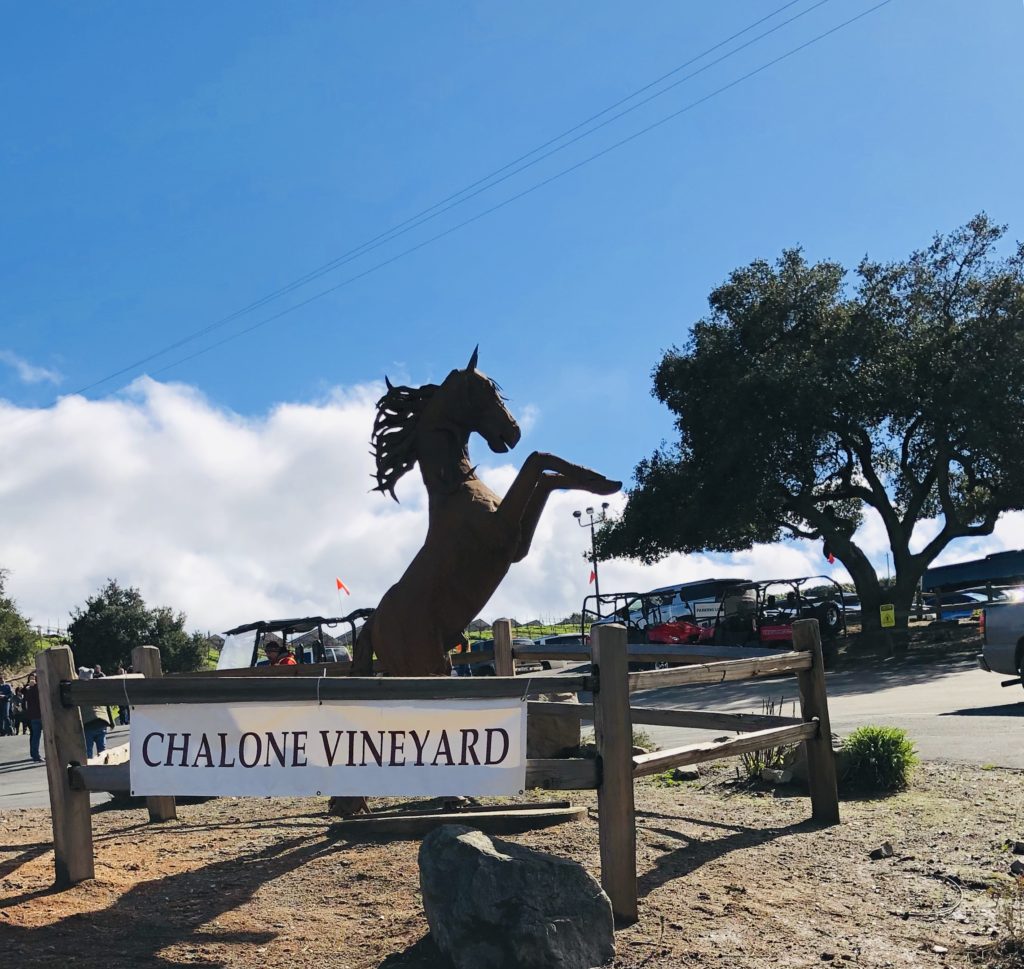
Heading north from Hahn, in another 7.3 miles, I reached Puma Road Winery. On the way, I passed rustic farm buildings and witnessed a huge rainbow arching over the Salinas Valley. While there were a few occasional patchy sprinkles, the day remained, overall, quite beautiful.

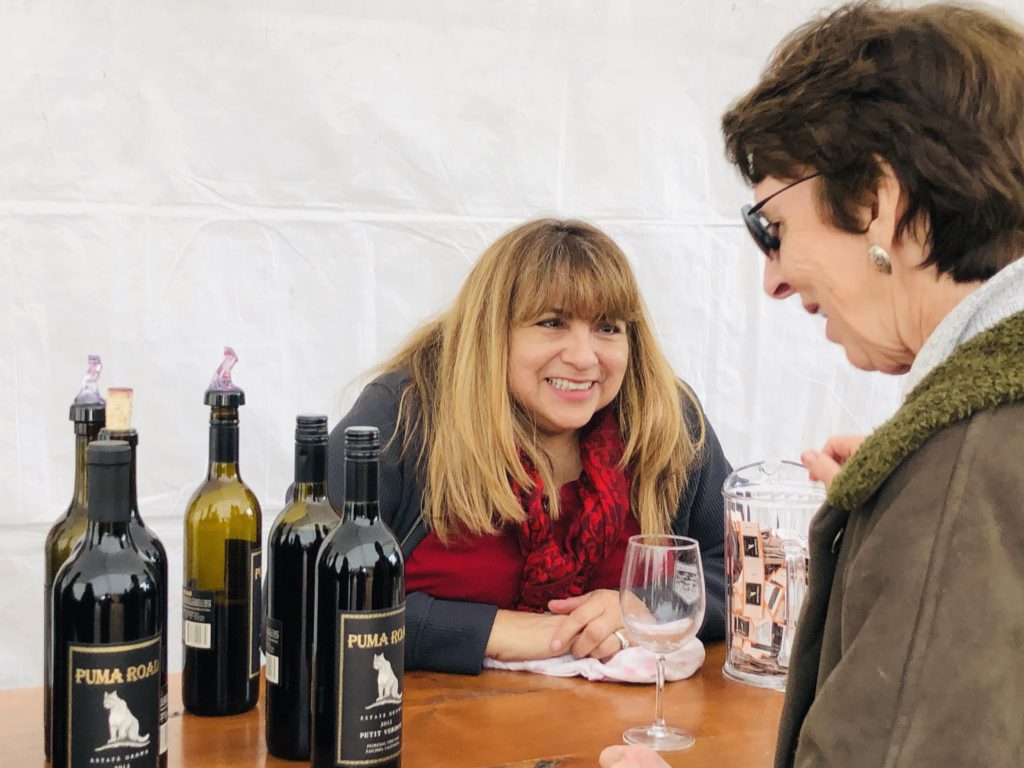
The staff at Puma were super friendly! A hop, skip and jump north of Puma Road is Manzoni Estate Vineyard. The estate is comprised of a mere six acres (that’s only twice as big as my farm!) but the wines they produce are exceptional. The Manzoni family has called this area home for nearly 100 years.

The Manzoni Estate Vineyard tasting room was intimate and inviting. 
The Swiss fare served at the Manzoni Estate Vineyard brought back memories of my days living in the Swiss area of Wisconsin. Indeed, my three sons are half Swiss! Following my visit at Manzoni, I headed just over a mile north to Pessagno Winery. This, in my humble opinion, is the coziest tasting room ever. I think it might be the combination of the warmth exuding from the wood burning stove, the cute cat curled up on a chair, the beautiful stained glass window, and the long, roomy wooden bar. Pessagno Winery just exudes ambiance and comfort.



The final stop on my wine tasting venture was Odonata Wines. Did you know that Odanata is another word for dragonfly? Odonata states that variety and quality are their watchwords and that the batches of wine they produce are made from grapes that are organic and grown sustainably. I’ll raise my glass to that!
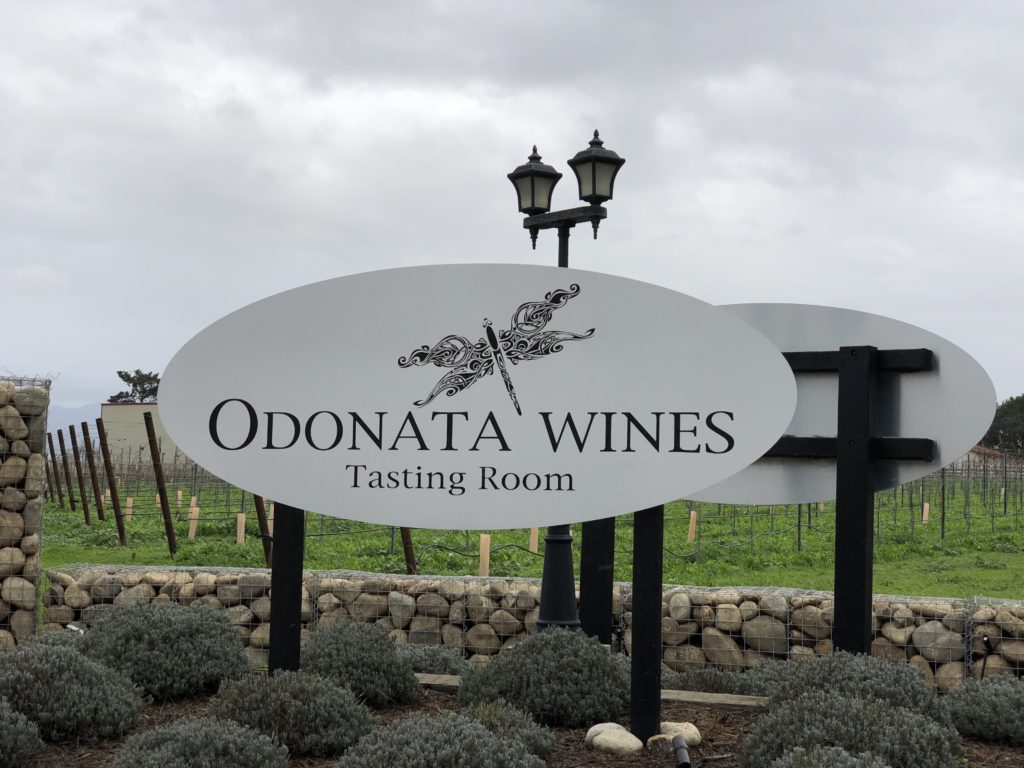

I had so much fun today and I can’t wait to repeat the experience next year! I hope that you get a chance to check out the River Road Wine Trail and enjoy it as much as I did. Remember, you don’t have to wait until the Valentine’s Passport event to visit, most of the wineries here are open year round. For more information on any of the wineries listed, or for information on the annual Valentine’s wine tasting event, see Wine Trail.
Helpful Hints for attending the Valentine’s Passport event:
- Arrive as early as possible as parking and crowds increase the later you start.
- Be aware that the wine service ends at 4 pm.
- Designated drivers who will not be imbibing get a discount: tickets are half price!
- Parking areas fill up quickly and you may end up walking quite a distance; choose footwear accordingly.
- Bring a warm sweater or coat as it can be chilly this time of year.
- Many transportation options are available if you don’t have a designated driver, including the Monterey Party Bus, limos, and of course, Uber.
- All wineries provide vegetarian as well as non-vegetarian food pairings.

Thank you for visiting my blog. Wishing you peace, love, happiness, and happy wine tasting!
-
Seacliff State Beach: Sand, Sunsets & Sunken Ships

Enticing you with golden sand, gentle sea breezes, and a wooden pier leading to the remains of an abandoned ship, Seacliff State Beach is paradise found. Seacliff State Beach lies next to Aptos, California, and is just south of New Brighton State Beach and Capitola.

Seacliff Beach was originally called Rancho Aptos. During the 1800s, it was a busy shipping port. By the 1920s, people fell in love with the enchanting scenery, and many summer homes were built on the beautiful bluffs around the area. In 1931, it became one of California’s first state beaches.

The view from one of the beautiful homes on the cliffs above the beach. *sigh* 
A seagull shows off his dance moves on the old pier. In 1930, the Seacliff Amusement Corporation bought a retired World War I concrete tanker, the SS Palo Alto. It was towed to Seacliff Beach and a pier was built leading to the ship. The ship was rebuilt as an amusement ship. There was a restaurant onboard called the “Fish Palace” with ocean views on three sides and a “Rainbow Ballroom”, where you could dance the night away. There was even a swimming pool onboard! Unfortunately, the Amusement Corporation went bankrupt after only two seasons and the ship was abandoned. During a winter storm, the ship cracked at the midsection. The State of California purchased the ship, and it was stripped of its fittings and left as a fishing pier. It was a popular fishing spot, but eventually, it deteriorated to the point where it was unsafe, and it was closed.

Snowy plovers dash in and out of the waves in their search for food. 
“Nature is painting for us, day after day, pictures of infinite beauty if only we have the eyes to see them.”–John Ruskin There is a paved level path, known as the “Promenade” that follows the mile-long beach and makes it possible for virtually everyone to enjoy the area. Beach wheelchairs are available for those unable to ambulate. As an occupational therapist, I was really thrilled during my visit to see an elderly man enjoying his stroll with his walker on the Promenade. It made my day.

Surfing is popular on the far south end of the beach. Seacliff State Beach is also a great place to go surfing, fishing, picnicking and beachcombing (no matter what your age!).

Where: 201 State Park Drive, Aptos, CA 95003
Phone: 831-685-6500
Hours: 8 am – sunset
Parking: You can park above the beach on the street for free and walk down the stairs to the beach, or you can pay 10.00 to enter below near the beach.
Camping: Beachfront camping is allowed for recreational vehicles only. There are 26 full hook-up campsites and 34 non-hook-up campsites.
Other helpful information: Dogs are allowed on leash only, alcohol and fires are prohibited, and drones are only allowed above the southern end of the primary day use parking lot. Fishing does not require a license from the pier but limits are applied by the Department of Fish and Wildlife. Multiple accessible restrooms are located along the “Promenade” pathway. A Visitor’s Center at Seacliff State Beach features exhibits and information about the area’s natural and cultural history. For more information, see Sea Cliff.

The last catch of the day is the best. I hope that you enjoy the breathtaking beauty of Seacliff State Beach. Thank you for visiting my blog! Wishing you peace, love, happiness, & beautiful vistas.
-
Vintage Fun in San Jose’s Willow Glen


Willow Glen is known as “San Jose’s Local Treasure”. It is an area filled with quaint vintage houses on quiet tree-lined avenues. It is also home to some unique shops and amazing restaurants.


Magpie welcomes you with a variety of felicities, from jewelry to clothing to home decor to paint. It is one of those unique, creative, quirky places where there is so much to look at you don’t know where to start.


Bertucelli’s La Villa Delicatessen was packed to the gills, even in the middle of the afternoon. It was standing room only. They have outdoor dining and this was also packed. Waiting in line here for handmade ravioli and fresh, delicious sandwiches and desserts is well worth it.


Park Place Vintage carries vintage clothing and collectibles and even has costume rentals!

Petroglyph is a cool ceramics lounge. I have not seen ceramics like this since my Mom painted Peanuts characters for my brothers and me in the 1970s. They supply use of all paints, brushes and art materials as well as assistance. Once your artwork is complete they fire them in on-site kilns for you. They even host group activities. Petroglyph indicates they are “designed as a place to gather, connect, and creatively explore”. I wanted to stay and creatively explore, but so many shops, so little time!

The cozy Mariette Chocolates has not only freshly made chocolates, but also fudge, coffee, pastries, gelato, and hot chocolate. I love the cute little vintage tables and chairs.

Susie Cakes is a super cute vintage bakery with very friendly staff.

The Willow Glen Collective is chockful of antiques and vintage finds.

The cozy outdoor seating at Vin Santo is so inviting.

Downtown Willow Glen frequently hosts festive events, including its annual summer festival, “Dancin’ on the Avenue”, which features music, food, and local wines. On Thursday, February 7th, from 5-8 pm Willow Glen is hosting a “Ladies’ Night Out”, which features “pampering”, as well as refreshments and specials! Sounds like fun to me!
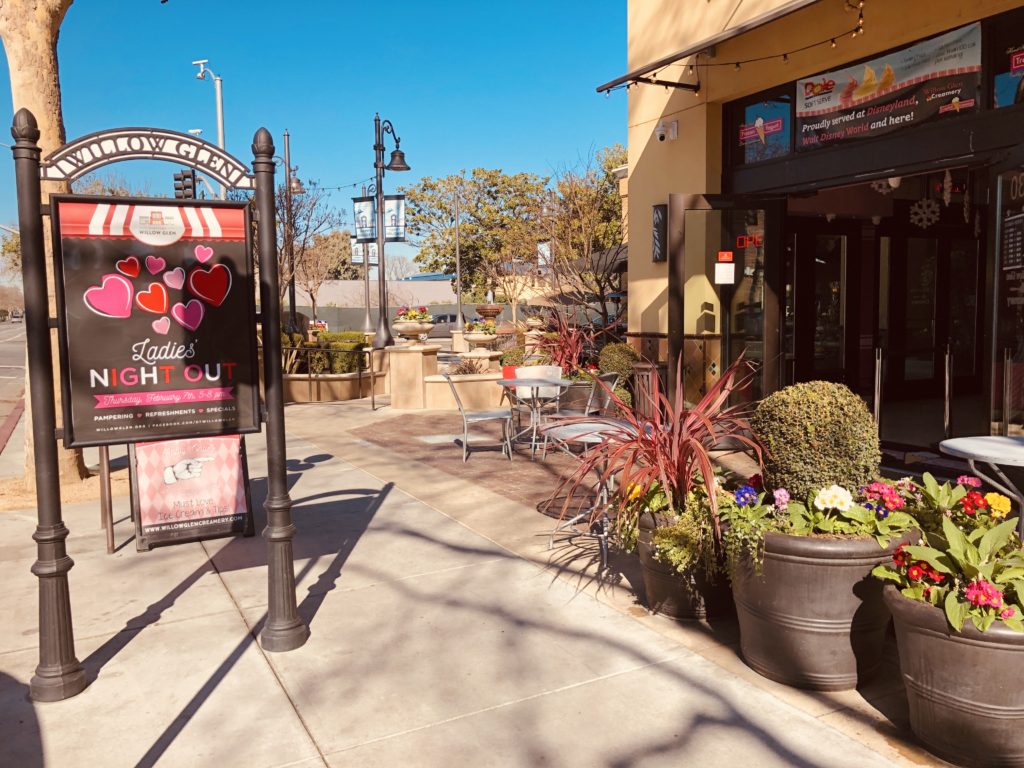
San Jose is home to some wonderful places, and I am adding Willow Glen to the list. For more information, see Willow Glen.

Thank you for visiting my blog! Wishing you peace, love, joy, and beautiful vistas!
-
Point Lobos: Crown Jewel of State Parks
 With turquoise waves crashing onto pristine sandy beaches, sunlight cascading through towering cypress trees, and beautiful flora and fauna surrounding you, it’s hard not to fall in love with Point Lobos. Located just south of Carmel-by-the-Sea, Point Lobos is named for a rock formation called Punta de los Lobos Marinos, or Point of the Sea Wolves. It is considered the “crown jewel” of the state park system. Whenever I have visitors from out of town, this is one of the first places I take them.
With turquoise waves crashing onto pristine sandy beaches, sunlight cascading through towering cypress trees, and beautiful flora and fauna surrounding you, it’s hard not to fall in love with Point Lobos. Located just south of Carmel-by-the-Sea, Point Lobos is named for a rock formation called Punta de los Lobos Marinos, or Point of the Sea Wolves. It is considered the “crown jewel” of the state park system. Whenever I have visitors from out of town, this is one of the first places I take them.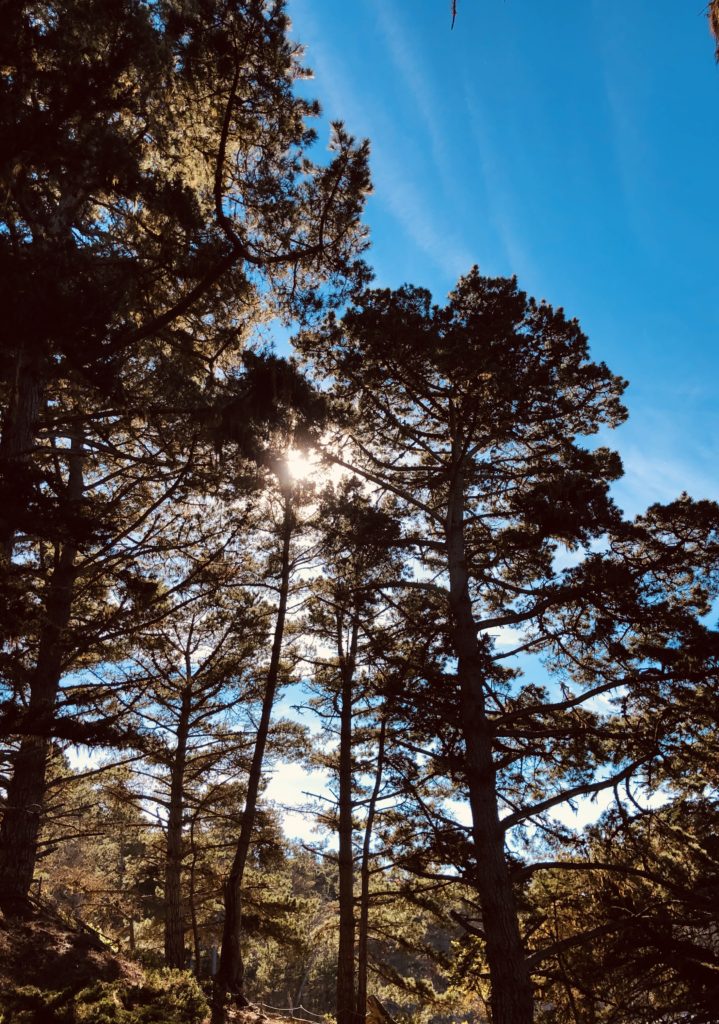
Point Lobos is one of only two places where the rare Monterey Cypress are found. One of the first things you may notice when you enter Point Lobos is the wonderful olfactory experience. If you could bottle this fresh, piney, ocean scent, I’m sure it would outsell Tom Ford. If you have sinus problems or a headache I think you should come here and just inhale the clean, sweet air. I swear it is that powerful. I love the scent, the scenery, and the flexibility of the trails here. It doesn’t matter if you are wheelchair bound or have scaled Half Dome at Yosemite, there are trails here for everyone.

Multiple movies have been filmed here, including Treasure Island, Lassie Come Home, The Sandpiper, The Graduate, and Turner and Hooch.

You may see Gray, Humpback & Blue Whales in the area as well as other wildlife. 

History buffs may enjoy the Whaler’s Cabin and museum filled with interesting artifacts relating to the history of the area. Whales were widely hunted here (I know, it makes me sad too) for their oil. Apparently, whale oil was quite the commodity until the early 1880s. It was used primarily for lamp fuel until it was replaced by cheaper petroleum products. Abalone was another industry at Point Lobos.

Over time, Point Lobos evolved from the whale and abalone industry to an area to simply enjoy nature, thanks to the efforts of Alexander MacMillan Allan, who began purchasing the land in 1898 in an attempt to preserve it, and the State Parks Commission who in turn purchased it from him in 1933. Thanks to the forethought and dedication of Mr. Allan, we are able to enjoy this pristine beauty today.

My favorite trail here is the North Shore Trail which leads you along the ocean’s edge with breathtaking views of the forest and sea. This time of year, harbor seals are giving birth and you may see areas cordoned off to protect the mothers and their pups. Be aware that on this particular trail you may have to squeeze by or climb over boulders and/or navigate large tree roots and rocky, uneven terrain. The trail ends in a large meadow which leads to a parking lot. You can continue to follow the trail on the right side of the parking lot to view exquisite overlooks of the beach.
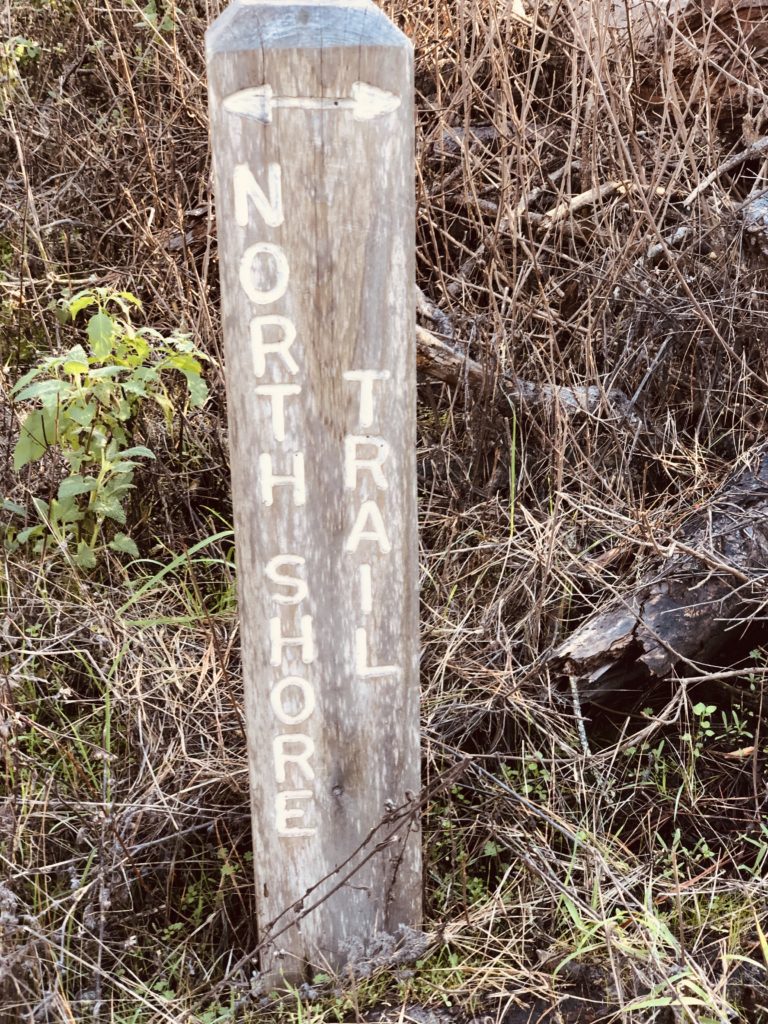

Numerous benches are placed along all trails, offering a place to enjoy a picnic lunch or simply contemplate the beauty around you. 
Beware the tree roots! Point Lobos offers poetry walks on Wednesday afternoons. Apparently, these are led by a docent with sojourns to various spots to contemplate the area’s beauty and write poems. While I love poetry I will refrain from attempting to entertain you with one of my own concoctions. I recommend that they also host Plein Air wine & paint sessions, I would definitely sign up for that!

I think that if you only have time to do one hike in the Monterey area, this is it. It has trails for all levels and it has spectacular, unparalleled views. I would personally rate Point Lobos a 10 and also give it summa cum laude honors. You will not be disappointed!

These fungi were everywhere at Point Lobos. I do not think they are edible but they are very pretty! Point Lobos is open daily from 8 am to 5 pm. For more information, see Point Lobos.
HELPFUL HINTS:
- Park alongside Highway 1 just south of Monastery Beach for free and follow the path to the entrance as inside parking is usually full.
- I recommend coming during the week as weekends can be crazy busy!
- Dogs & Horses are not allowed.
- Smoking is forbidden. (Although when I was there, a girl was quite flauntaciously smoking whilst hiking. I made that word up, by the way; it is a combination of flaunt and ostentatious. Basically, she was being a stinker doodle.)
- Bicycles are not allowed on the trails.
- Fishing is not allowed.
- Restrooms are available at the parking lots at both the beginning and end of the North Shore Trail.
- Kayaking and Scuba diving are allowed. Bring your own stuff, because no equipment rentals are provided. A popular scuba diving area is at Whaler’s Cove. You can make reservations up to three months in advance. For more information see scuba diving.
- Binoculars may be checked out from the information station to view sea otters, seals, whales, and birds.
- Wear layers of clothing as it can be chilly and windy at times.
Thank you for visiting my blog! Wishing you peace, love, happiness, and beautiful vistas!
-
Foraging for Fungi in Beautiful Big Sur
 January is peak mushroom season in central coastal California. Each year the Big Sur area hosts a four-day Foragers Festival to raise money for the Big Sur Health Center, a non-profit facility that provides much needed local medical services. Multiple well-known restaurants and renowned chefs create magical meals featuring wild ingredients foraged in Big Sur paired with delicious local wines and beers. There are also raffles, auctions, and a “Fungus Face-Off”, which pits local chefs against each other in a cooking competition featuring fungi. While I have been known to consume mushrooms on my pizza and occasionally partake of portobellos I must admit that my knowledge of mushrooms is rather scant. Mushrooms are ubiquitous at my farm and I always wonder if they are edible or poisonous, so when I saw that the festival included foraging hikes led by fungi experts, I jumped at the chance.
January is peak mushroom season in central coastal California. Each year the Big Sur area hosts a four-day Foragers Festival to raise money for the Big Sur Health Center, a non-profit facility that provides much needed local medical services. Multiple well-known restaurants and renowned chefs create magical meals featuring wild ingredients foraged in Big Sur paired with delicious local wines and beers. There are also raffles, auctions, and a “Fungus Face-Off”, which pits local chefs against each other in a cooking competition featuring fungi. While I have been known to consume mushrooms on my pizza and occasionally partake of portobellos I must admit that my knowledge of mushrooms is rather scant. Mushrooms are ubiquitous at my farm and I always wonder if they are edible or poisonous, so when I saw that the festival included foraging hikes led by fungi experts, I jumped at the chance.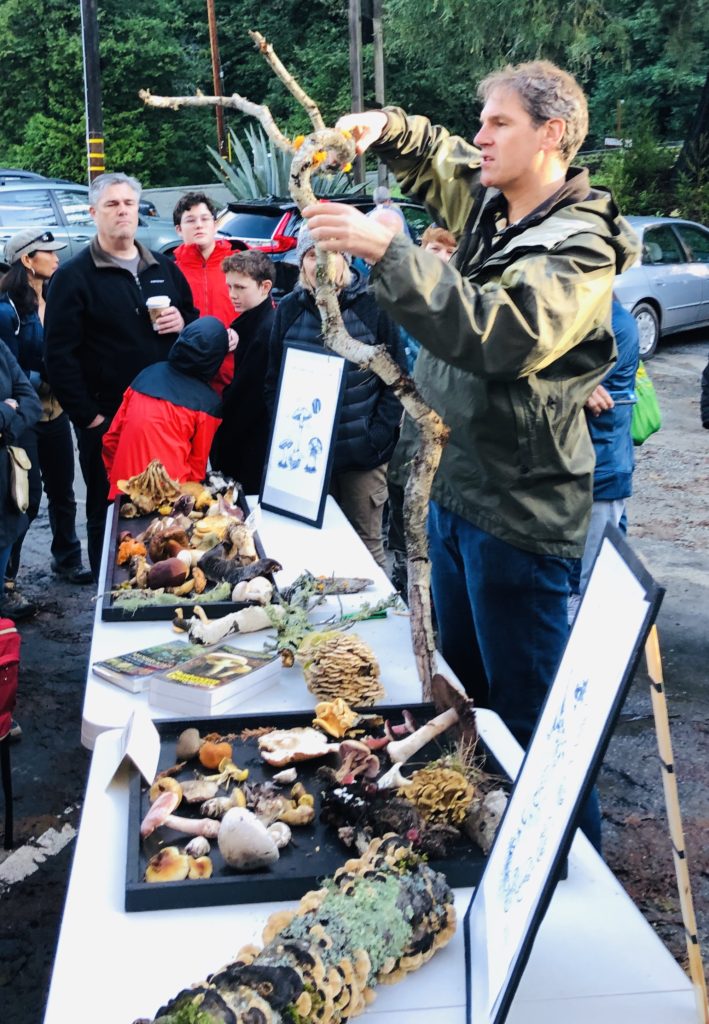
The hikes were led by Todd Spanier, who truly is a walking encyclopedia of knowledge as well as a talented chef. I liked that he could not only identify wild plants and fungi, but also explain how they could be used for culinary purposes. He explained that he started learning about mushrooms from his Italian grandfather when he was only five years old. Todd owns a company called “King of Mushrooms” which provides wild foraged foods to many local restaurants and businesses. He is considered to be a pioneer of the sustainable and wild food movements in California. If you would like to join Todd or other experts to learn about wild edibles, see Wild Food Walks.

The Good (Edible) Fungi. 
The Bad (Won’t Kill You But Yucky) Fungi. I learned that the biggest threat to fungi is not over picking, but rather, destruction of their habitat. I also learned that you can touch poisonous fungi and not worry about getting sick, that the only way to become ill is if you ingest the mushroom. Stories were also related regarding people from Asia and Russia coming to California and picking and eating mushrooms that looked identical to those in their original countries but which were toxic and poisonous. You can imagine the dire consequences. Yikes!

And the Ugly (Poisonous) Fungi. 
Conjoined redwoods along the way. It was a beautiful, sunny day as we entered the Big Sur forest following days of rain. We passed gorgeous copses of redwoods, bay laurels, and canyon oaks. Lauren, another of our guides, was very knowledgeable regarding edible items and pointed out horsemint, miner’s lettuce, and redwood sorrel.

Lauren & Todd identifying our finds. 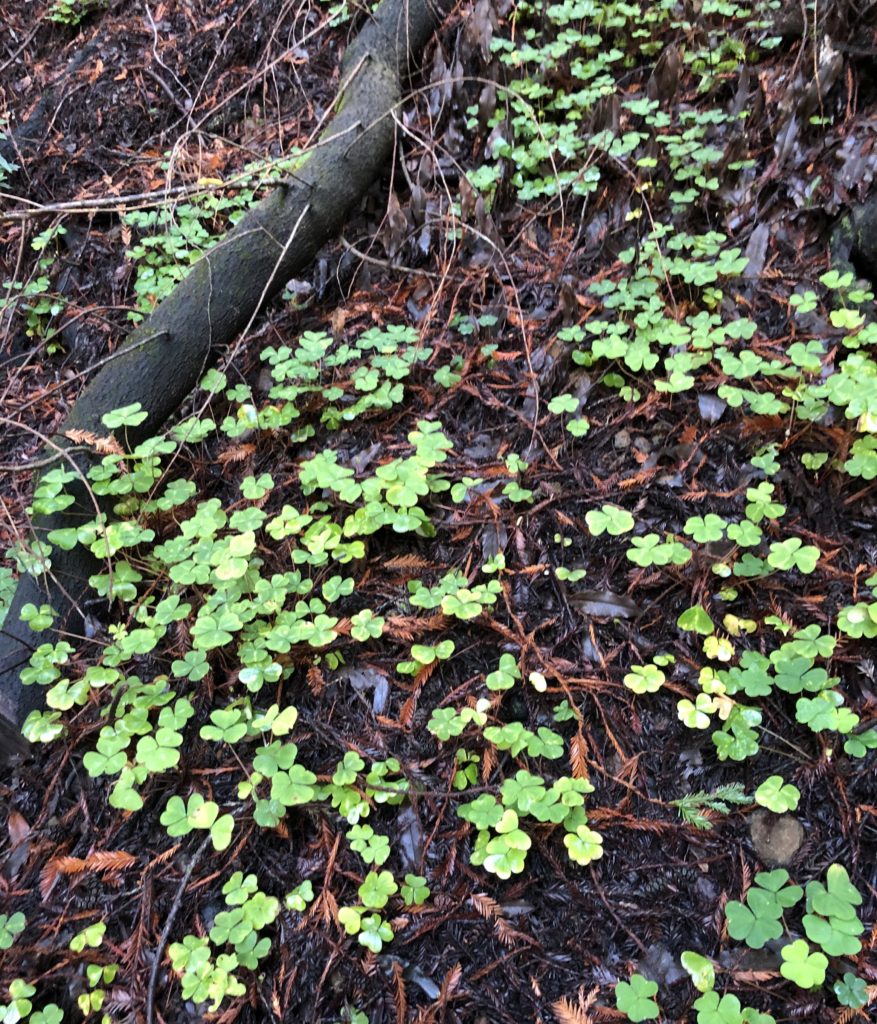
Redwood sorrel tastes like a tart green apple but should only be eaten in small quantities due to oxalic acid. 
This is a nut, unfortunately, I do not remember the name! As many of you may know, I have a word obsession. I love learning new words, wordplay, etc. So, of course, I was stoked when I started learning about all the amazing fungi out there! Scientific nomenclature is interesting, but who can beat names like “Witches Butter”, “Candy Caps”, “Turkey Tails”, and “Slippery Jacks”?

A banana slug feasts on honey mushrooms. Banana slugs were everywhere. Imagine my surprise when I learned that some younger males were licking them! I asked one kid why, and he said “licking a banana slug numbs your tongue and is a rite of passage.” Ewwwww. Boys are just weird.
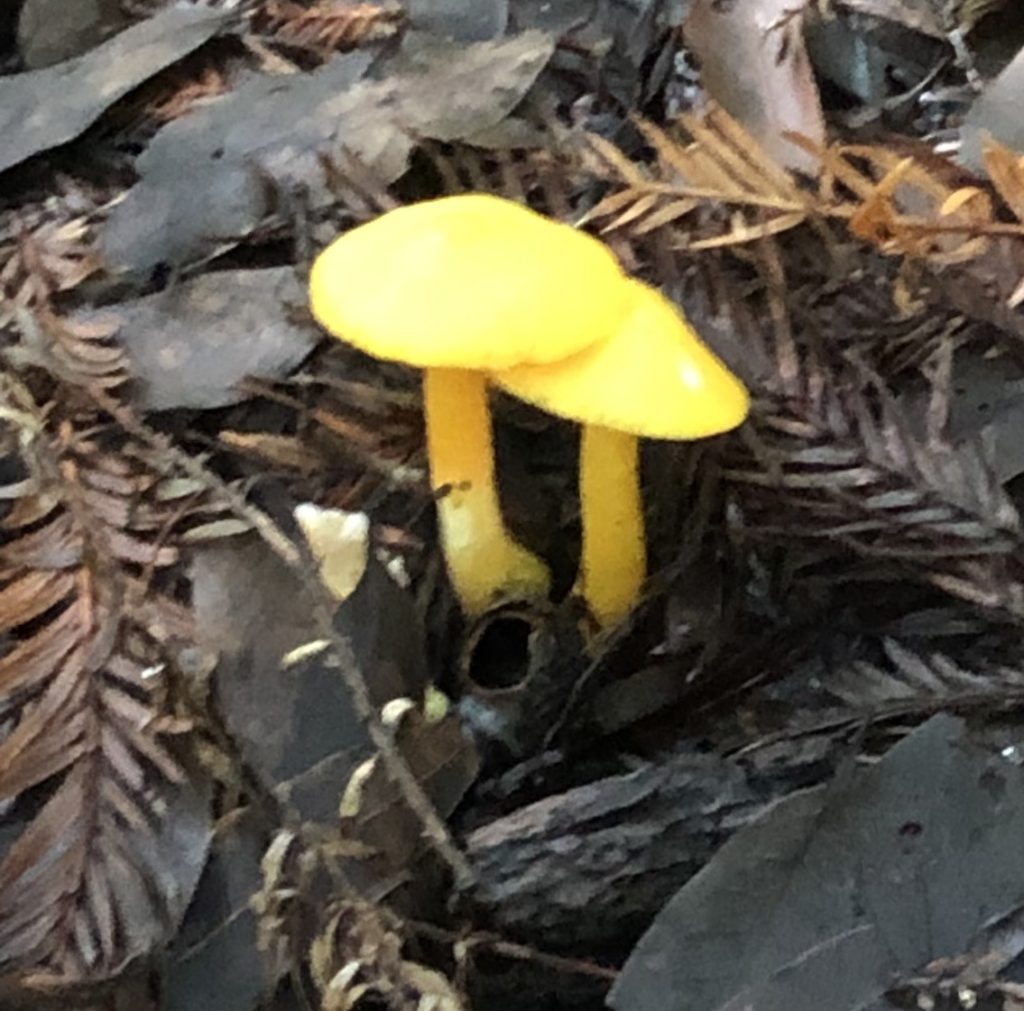
We saw many of these “Waxy Caps” on our hike. 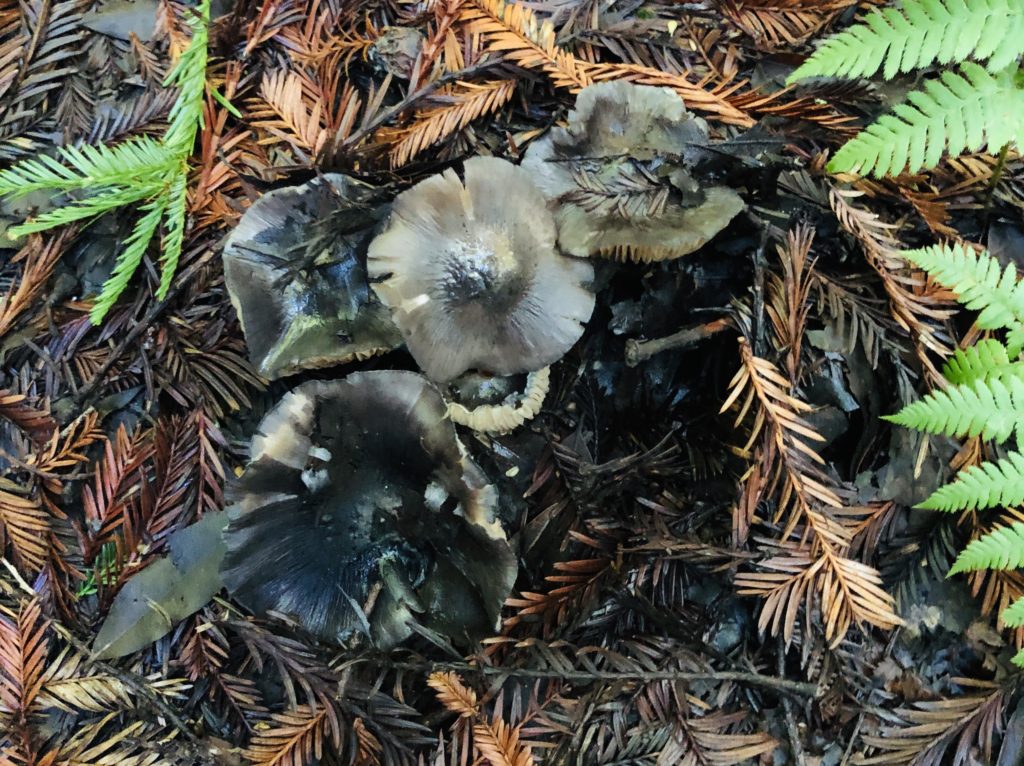
These “Black Knight” mushrooms were once popular in Europe but eating them over time can cause a toxic reaction. Avoid! Todd’s Takeaways:
- “Do not believe what you see on the internet.”
- “Do not eat mushrooms raw, you can get sick.” He stated that cooking mushrooms also enhances their nutritional value.
- “Know the tree, know the mushroom.” He said you can often tell what a mushroom is according to the tree it grows on or near.
- “Never eat a mushroom unless you are 100% sure of what it is”. There are some look-alikes that can befuddle even seasoned fungi seekers.
- “Use guidebooks to help identify fungi”.
Todd ended his hike by telling us “it doesn’t matter where we’re from, mushrooms connect us to nature and to our ancestry.” I for one would love to learn more and will be perusing my local library and also attending more foraging hikes. The best way to learn is from people who know their stuff, right? Whether you are a foodie, a nature lover, interested in sustainability, or just find the idea of foraging for wild mushrooms fascinating, you will enjoy this amazing experience. I can’t wait to try out more activities at the Big Sur Foragers Festival next year! For more information on this unique event, see Festival.
Thank you for visiting my blog! Wishing you peace, love, happiness, and beautiful vistas!
-
Cannery Row: What to See & Do!

The view from McAbee Beach cameos some of Cannery Row’s fabulous restaurants and shops. If you are visiting Monterey, Cannery Row is probably one of the top things on your bucket list. Full of colorful history and nestled next to the picturesque bay, it is a must see. To understand this area, first a little history. Monterey, California was once the sardine capital of the world. The first sardine cannery was built by Frank Booth at Fishermen’s Wharf in 1896, and was soon followed by a rival Japanese sardine plant at Cannery Row called the Pacific Fish Company. Fishing boats loaded sardines into floating wooden hoppers, and they were sucked ashore through massive pipes. At Cannery Row, once called Ocean View Avenue, more than eighteen canneries eventually worked around the clock to fill sardine tins. John Steinbeck described the scene in his book, Cannery Row: “The whole street rumbles and groans and screams and rattles while the silver rivers of fish pour in out of the boats and the boats rise higher and higher in the water until they are empty. Then from the town pour men and women in trousers and rubber coats and oilcloth aprons. They come running to clean and cut and pack and cook and can the fish.” The overhead bridges allowed fish to be moved from one side of the factory to the other, and remain a testament to Monterey’s history. Unfortunately, overfishing led to the collapse of the sardine industry, and by the mid-1950s, Monterey turned to tourism to replace the sardine industry.


The rear view of the Aquarium is much more interesting than the front view! What to See & Do
1. EXPERIENCE THE AQUARIUM
The #1 thing to see here is the amazing Monterey Bay Aquarium. Because it is so magical and fantastic, I actually dedicated an entire blog post to it with tons of information, see Aquarium.

2. SEE STEINBECK’S OLD STOMPING GROUNDS
As you are strolling along, you may notice a dull and rather unassuming little building sandwiched in between the storefronts at 800 Cannery Row. This building was once home to the Pacific Biological Laboratories owned by marine biologist Ed Ricketts. Ricketts was a good friend of famous writer John Steinbeck. Together, Steinbeck and Ricketts spent much time together at “Doc’s Lab”, as it was known, preserving specimens and talking about philosophy. It has been said that Steinbeck’s biological and scientific training supported his notion of all humans as part of a greater ecosystem and his focus on the environment in his writing. Ricketts influenced several of his novels, including Cannery Row, Sweet Thursday, In Dubious Battle, The Grapes of Wrath, The Moon is Down, and The Sea of Cortez. The city of Monterey schedules free public tours of the building throughout the year. For more information, call 831-646-5640 or see Free Tours.
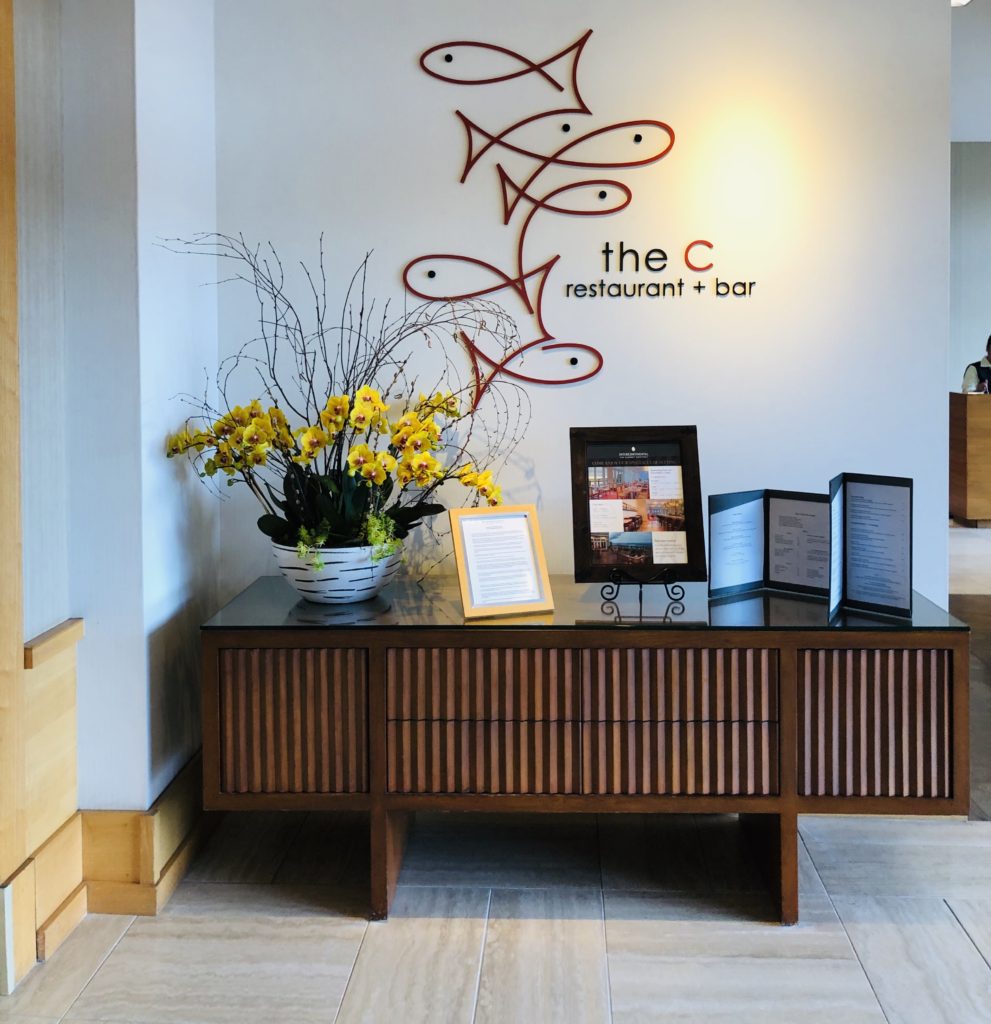
3. EAT AND DRINK
Foodies will love the plethora of restaurants available, including fresh seafood at The Fish Hopper, The iconic Sardine Factory, Lalla Oceanside Grill, the Whaling Station, and the C Restaurant & Bar, along with many, many more. If you choose a waterfront restaurant, be sure to ask for a table with an ocean view. You may be able to see sea lions, harbor seals, sea otters, dolphins, or even whales while you eat your meal! For more information see Restaurants.


If you are keen-o for some vino, check out A Taste of Monterey, which is located near McAbee Beach and offers more than 90 local wines. Other great wine tasting rooms include Carmel Ridge Winery, Bargetto Winery, Blue Fox Cellars, and The Wine Experience. Have a glass or flight of wine while overlooking beautiful Monterey Bay. For more information, see Wine Tasting.

For all you beer enthusiasts (I hope my three brothers are reading this!) there is the Cannery Row Brewing Company, which has a warm pub feeling and offers lots of goodies to eat as well, including their signature giant pretzels. Located at 95 Prescott Ave. just two blocks from McAbee Beach, the brewery website states it “offers the second largest number of beers available on tap in Northern California and is the largest single outlet beer account in Monterey County.” Cheers to those beers!


4. GO SHOPPING
Cannery Row is also home to over 85 shops within a four to five block area including boutiques, art galleries, jewelry and antique stores, candy shops, and gourmet food stores. My personal favorite is the Olive Bar. You can taste over 70 different varieties of olive oil and balsamic vinegar or peruse their gourmet food items and cute home and kitchen decor.
5. ACTIVITIES FOR KIDS
If your little whippersnappers get tired and bored looking at all the aforementioned shops, there are a couple of places they may enjoy. For kids and kids at heart, there is a Mirror Maze and Lazer Challenge and a Spirit of Monterey Wax Museum, both located just down the street from the Aquarium.

6. BIKE, KAYAK & PADDLE BOARD
For those of you interested in more physical activities, there are bike, kayak and paddle board rentals available so you can explore the area by both land and sea. Adventures By The Sea is conveniently located right next to the Recreation Trail and across the street from the beach where the kayaks are launched. Here you can rent family four-wheel bikes (called surreys), electric bikes and more. They offer group and private kayak tours of Cannery Row, paddle board lessons, and also bike tours of 17-Mile Drive. For more information, see By The Sea. Big Sur Adventures, located at 125 Ocean View Blvd, near the Aquarium, also offers bike rentals and tours. For more information, see Big Sur.
I hope you enjoy visiting Cannery Row! Wishing you peace, love, happiness, and beautiful vistas!
-
Point Reyes: Gateway to Adventure!
 Point Reyes is an incredibly picturesque area located in Marin County. It is only about an hour and a half drive from San Francisco but it feels like you are in a different world here, with thousands of acres of wilderness, secluded villages, rolling hills with dairy farms, achingly beautiful beaches, and amazing wildlife. If you look at geologic maps, the San Andreas Fault Line slices through the area like a knife cutting the end off a loaf of bread. Point Reyes is the end of the loaf being cut off. It sits on the Pacific Tectonic plate, the same one as the country of Japan, while the rest of Marin County is on the North American plate. Point Reyes is basically an island that moved up the coast on this plate over millions of years to its present location. Apparently, Point Reyes Peninsula continues to move 3-4 centimeters a year towards the northwest. If it keeps moving it could ostensibly end up in Alaska or something. Crazy, right? Anyway, here are the FIVE most fun, must see and do things in the Point Reyes area.
Point Reyes is an incredibly picturesque area located in Marin County. It is only about an hour and a half drive from San Francisco but it feels like you are in a different world here, with thousands of acres of wilderness, secluded villages, rolling hills with dairy farms, achingly beautiful beaches, and amazing wildlife. If you look at geologic maps, the San Andreas Fault Line slices through the area like a knife cutting the end off a loaf of bread. Point Reyes is the end of the loaf being cut off. It sits on the Pacific Tectonic plate, the same one as the country of Japan, while the rest of Marin County is on the North American plate. Point Reyes is basically an island that moved up the coast on this plate over millions of years to its present location. Apparently, Point Reyes Peninsula continues to move 3-4 centimeters a year towards the northwest. If it keeps moving it could ostensibly end up in Alaska or something. Crazy, right? Anyway, here are the FIVE most fun, must see and do things in the Point Reyes area.
1. POINT REYES STATION
This tiny town, population 350, was previously a stop on the North Pacific Coast Railroad that connected the northern town of Cazadero all the way to its southern stop in Sausalito. After the great 1906 earthquake, this railway was used to haul redwood and other lumber to rebuild San Francisco. The wonderful old Victorian buildings in Point Reyes Station offer a glimpse of the past with a plethora of cute little shops and amazing restaurants. It is a great place to stop, shop, and eat. Places to eat here include Cafe Reyes which is known for its bomb diggety wood-fired pizza and fresh shucked local oysters and the Station House Cafe which serves everything from beer and burgers to fancier fare, all sourced from local farms and creameries. Station House Cafe has it all, from their quaint bar to their lovely outdoor garden seating and there is even live music on Sundays with no cover charge. The Bovine Bakery offers coffee, espresso, and yummy baked goods and soups. Cowgirl Creamery creates delicious artisanal cheeses as well as soups, salads, and sandwiches at their local digs. For more information on the unique food venues here, check out Where to eat in Point Reyes Station.

2. CYPRESS TREE TUNNEL & ART DECO RADIO STATION
From Point Reyes Station, take Mesa Road west to Shoreline Highway. Follow for .2 miles until you come to Sir Francis Drake Boulevard. Turn right and follow for 10 miles to see the famous Cypress Tree Tunnel. This has been photographed a gazillion times by probably every photographer on the planet because it is so ridiculously amazing. The cypress trees were originally planted in the 1930s. The road through the trees leads to an old white art deco building that houses the Point Reyes National Seashore North District Operations Center and the KPH RCA Radio Station. KPH is the only surviving Morse code coastal station in North America. It was created in the early 1900s and was called the “wireless giant of the Pacific”. For decades, it provided a communication link to ships at sea using telegrams and radioteletype. The station was nearly destroyed after it fell into disrepair, but fortunately, the Maritime Radio Historical Society, in conjunction with the Point Reyes National Seashore, came to the rescue. Today, you can hear KPH every Saturday from 12-4 pm. Special events and weekend tours are occasionally held at the station. For more information see KPH Maritime Radio Station. Where: 17400 Sir Francis Drake Blvd, Inverness, California. Note: The only roadside signage is for the “North District Operations Center” and is on the right side of the road adjacent to the Cypress Tree Tunnel. Visitors are asked to park along the highway or follow the driveway to the parking lot on the left end closest to the station. They request that you do NOT park along the driveway next to the cypress trees because it damages their roots. Save the trees, people!

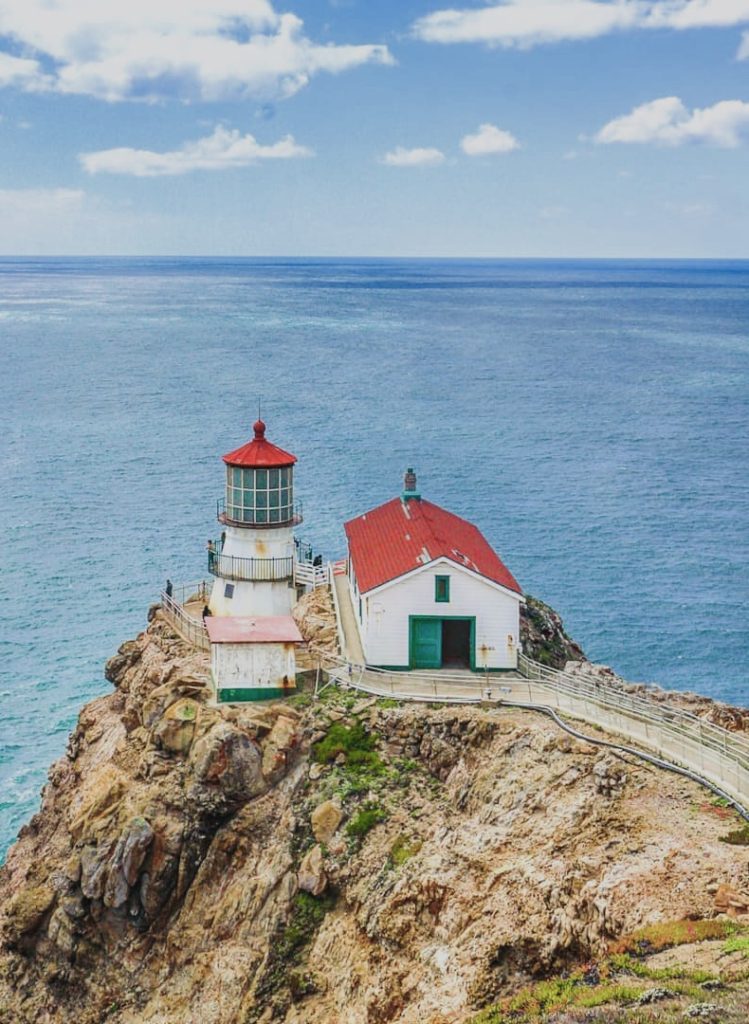
3. POINT REYES LIGHTHOUSE
Continue west on Sir Francis Drake Boulevard towards the Point Reyes Lighthouse. Your travels will become very lumpy, bumpy, and bouncy as you follow the road past bucolic farms with happily grazing Holsteins. These black and white bovines gave me warm fuzzies. They reminded me of my days as a cheesehead, living in the heart of dairy farm country in Wisconsin. The Point Reyes Lighthouse, a national historic landmark, was built in 1870. It was in service until 1975 when the Coast Guard installed an automated light below it. The lighthouse is currently owned by the National Park Service. Although it is not currently open due to restoration, you can follow its progress here: Point Reyes Lighthouse. The most current blog post indicates that it will be closed through January 31, 2019. Even with the lighthouse closed, this is a great area for hiking and has amazing vantage points to view the wind-swept coastline and possibly do some whale watching. If you want to wait and visit when the lighthouse is open, be aware that it is a .4 mile walk down 308 stairs down to the lighthouse. The lighthouse website indicates that they will return to their regular hours (Friday through Monday from 10 am-4:30 pm) once restoration is completed. Wear good walking shoes and bring a jacket as it can be chilly and windy. There is no entrance fee. There are restrooms in the parking area. Please remember to take your garbage with you and respect the property and wildlife here. Where: 27999 Sir Francis Drake Blvd. Inverness, CA 94937. Phone: 415-669-1534

4. ELEPHANT SEALS & HISTORIC LIFEBOAT STATION NEAR CHIMNEY ROCK
When you leave the lighthouse, follow the one lane Chimney Rock Road to the right to the Chimney Rock parking area. Here you can check out the history of life-saving surf boats at the station (read about them here), observe the elephant seal rookery at Drake’s Beach, or hike three miles round trip to Chimney Rock for breathtaking cliffside views of the beach. Beginning in December, male elephant seals arrive and are soon followed by pregnant females in preparation for the birth of their pups. Point Reyes is one of only a handful of places on the Pacific Coast where they can be observed. Elephant seals were previously hunted to the point of near extinction for their oil-rich blubber. Fortunately, due to protection, their population has revived. The Point Reyes elephant seal population is now estimated to be between 1500 and 2000. Last year around Valentine’s Day, most of Drake’s Beach was closed due to being completely inundated with these honkers going bonkers! Be aware that no dogs are allowed on Drake’s Beach. It is a great place to stop and have a picnic, build sand castles, or collect driftwood and sea glass. You may want to bring binoculars for better views of the wildlife here. A visitor’s center and restrooms are available near the parking area. For more information see Drake’s Beach. If you enjoy history, by this time you may be wondering what is up with Sir Francis Drake Boulevard, Drake’s Beach, Drake’s Bay, etc. Apparently, Sir Francis Drake originally discovered Point Reyes in 1579, named it “New Albion”, and claimed it for England. In 2012, the area was designated a National Historic Landmark.

Photo courtesy of Jay Slupesky @jayslu 5. HIKING AT TULE ELK PRESERVE BY TOMALES BAY
Follow Sir Francis Drake Boulevard east for .3 miles until you come to Pierce Point Road, and follow this for 3.8 miles, staying left. The hike begins at the abandoned Pierce Point Ranch and ends on stately bluffs overlooking the ocean. The hike is 9.4 miles round trip. Stay on the well marked and maintained Tomales Point Trail to view herds of tule elk as they graze overlooking Tomales Bay. Tule elk are found only in California. They get their name from the tule, or sedge, in the freshwater marshes they feed upon. They almost became extinct in the late 1800s but due to conservation measures, there are approximately 5700 tule elk in the wild in California today per the California Department of Fish and Wildlife. Studies have shown that they play a critical role in maintaining native ecosystems. The males, with their antlers, remind me of Santa’s reindeer. Apparently, the best time to see the males bugling and fighting with each other over the females is in August through October. Bugling is a call the bulls make to attract the girls. Because they are wild animals, please observe them from a distance, stay on the trail, move and talk quietly, do not bring pets along, and do not feed the elk. The park service also asks that you do not remove any elk antlers as they provide an important source of calcium for other wildlife species. For more information, check out the California Department of Fish and Wildlife’s Tule Elk page. Restrooms are available at the beach parking lot on Pierce Point Road. Where: Pierce Point Road, Inverness, CA 94937 Phone: 415-464-5100
Helpful Hints:
- I highly recommend checking out the Point Reyes National Seashore Association, it has so much information it could literally be made into a book or even a documentary film. Seriously.
- If you want to check out the weather before you visit, see the Point Reyes Lighthouse Visitor Center Webcam
I hope you enjoyed this post and get a chance to visit Point Reyes. Tell me what you think! Thank you for visiting my blog! Wishing you peace, love, happiness, & beautiful vistas.
-
Skywalking Back in Time in Nicasio, California

Photo courtesy of Michael Ryan @michaelryanphoto. Ok, you can’t really skywalk in Nicasio, but I’ll get to that later. I first saw Nicasio on a trip back from Point Reyes to Monterey. I love old architecture and the fact that this tiny town was full of old Victorian buildings and cute little picket fences attracted me immediately. Nicasio has a population of fewer than 100 people per Wikipedia but the Nicasio website indicates they have “a few hundred families”. Let’s just say it’s very small. This quaint little town is located in a secluded valley eight miles southwest of Novato and is less than an hour drive north of San Francisco. It is the meeting place of four drainage areas for the Nicasio Creek and is the location of the man-made and quite lovely Nicasio Reservoir.

Nicasio is also home to a post office, general store, volunteer fire department, church, and what has to be the teeny tiniest historical society building ever. There is also a baseball field in the town square, a restaurant, and a Druid’s Hall. I am ashamed to say that at first, I imagined the Druid’s Hall was for people dressed like Gandalf from Lord of the Rings as a place to occasionally gain a reprieve from hours spent cavorting in copses of trees with their walking sticks and long white beards. I now realize they are a fraternal group similar to the Masons or the Shriners, the latter those guys who wear fezzes and speed around in itty bitty motorized cars in parades. They may look or seem odd but they are merely hanging out and doing wonderful philanthropic things to help other people.

Most of the land around the town is filled with peacefully grazing cattle, rustic farms, and vineyards. After driving through town you enter a thick redwood forest to the east which is shadowy, elusive and possibly enchanted. (This is where I initially thought the Druids hung out). Ornithology buffs may be interested to know there is a bird named after the area. The Nicasio chickadee, which is a subspecies of the chestnut-backed chickadee, is a native here, so all you bird watchers should bring your binoculars if you want to catch a glimpse of these feathered friends.

This Victorian school building featured prominently in a creepy horror movie filmed in Nicasio. It is dated 1871 and is a historical landmark. The town was also once home to a 22-room hotel which opened in 1867. Unfortunately, it burned down in 1940. A new restaurant/bar was built on the site and is now home to Rancho Nicasio, which features food, dancing and live music and is a venue for weddings as well as private parties and events. Rancho Nicasio is owned by Bob Brown, who was previously the manager for Pablo Cruise and Huey Lewis and the News. He is also part owner (with Boz Scaggs) of a San Francisco nightclub called Slim’s. His son, a graduate of the California Culinary Academy heads the kitchen. I am hoping to check this place out on my next visit to Nicasio, it sounds amazing!

The very picturesque St. Mary’s Catholic Church was built in 1867 from local redwood. Nicasio has its own website and it is described as “The Marin County town that time forgot”. Time may have forgotten it but it has certainly been the source for modern inspiration. This little town is actually the headquarters for George Lucas’s Skywalker Ranch. What? Seriously? Yes, George Lucas can skywalk away here on his ranch and relive his Star Wars and Indiana Jones glory while we mortals are doomed to pathetically shamble about on the ground. That’s life. By the way, Skywalker Ranch is closed to the public, and there are tons of armed security guards patrolling the grounds. I am sorry to dash your dreams of convincing George to let you skywalk with him. Yet, before you are completely crestfallen, let me tell you that George Lucas has his own winery here! Yes, you can drown your sorrows in a big glass of chardonnay or pinot noir from Skywalker Vineyards. Unfortunately, there is no public tasting room at Skywalker Vineyards, they have a private tasting room by invitation only. However, you can order Skywalker wines online at their website: Skywalker Vineyards. The SV website states that Lucas was inspired by his friend Francis Ford Coppola to create the vineyard and winery. Coppola and Lucas have known each other for decades and worked together on the famous 1973 film American Graffiti which Lucas co-wrote and directed and Coppola produced.

Nicasio also served as a film location for a few movies including The People, which stars William Shatner in his hipster years, Shoot the Moon, which features Albert Finney and Diane Keaton (and garnered them both Golden Globe nominations), and Village of the Damned. The latter, shot in 1995, features the Nicasio School as well as multiple homes and landmarks in the area. Village of the Damned is an American remake of an old 1960 British horror film. It stars Christopher Reeve in his last film role before becoming paralyzed, as well as Kirstie Alley and Mark Hamill (aka Luke Skywalker). Before you rush to see this movie, be aware that in addition to being a pretty sorry failure at the box office, it was nominated at the 16th Golden Raspberry Awards for Worst Prequel, Remake, Rip-off or Sequel.
Pearl Jam fans may be interested to know that their 1993 song “Daughter” was recorded here. Apparently, it is about a girl with dyslexia. I love this song, especially the part where they yell “She will rise above!”. Just gives me goosebumps.
So now, if you drive through a little town called Nicasio, you will know that there is much more to this pastoral, quiet village than meets the eye. You may want to crank up Pearl Jam and pay homage to George Lucas as you pass through by whispering the following words, “I’m one with the Force. The Force is with me”. Perhaps, one day, he will open Skywalker Ranch or Vineyards to us so we can live our skywalking dreams. Until then, thank you for visiting my blog! Wishing you peace, love, happiness & beautiful vistas.
-
Wet Your Whistle at Cowgirl Winery in Carmel Valley
 If you love wine, you need look no further than Monterey County. I am blessed to live just over the hill from Carmel Valley, one of the best wine tasting areas in California. Nestled in a valley bordered by the Santa Lucia Mountains, Carmel Valley is picturesque Old Western California at its best. While some of the area wine tasting rooms can be a bit upscale and fussy, Cowgirl Winery’s tasting room, housed in an old redwood barn, is authentically rustic and down-to-earth, conjuring images of cowboys and cowgirls, cattle, horses, saloons, & spirits. With country western music filling the air and plenty of activities on site, you will be rustling up some fun in no time.
If you love wine, you need look no further than Monterey County. I am blessed to live just over the hill from Carmel Valley, one of the best wine tasting areas in California. Nestled in a valley bordered by the Santa Lucia Mountains, Carmel Valley is picturesque Old Western California at its best. While some of the area wine tasting rooms can be a bit upscale and fussy, Cowgirl Winery’s tasting room, housed in an old redwood barn, is authentically rustic and down-to-earth, conjuring images of cowboys and cowgirls, cattle, horses, saloons, & spirits. With country western music filling the air and plenty of activities on site, you will be rustling up some fun in no time. The delicious wines here include Cabernet Sauvignon, Cowgirl Red, Malbec, Pinot Noir, Chardonnay, Albarino, Blush Rose, & Picpoul. Once you have the Cowgirl Winery bug you will be tempted to return with your family and friends again and again. It’s a fun place to enjoy flights (or single glasses) of wine while enjoying all the sights and sounds, including the super cute old truck parked outside. Cowgirl Winery also offers a “Boots for Booze” exchange: donate a pair of cowboy boots and receive a free bottle of wine. How divine!
The delicious wines here include Cabernet Sauvignon, Cowgirl Red, Malbec, Pinot Noir, Chardonnay, Albarino, Blush Rose, & Picpoul. Once you have the Cowgirl Winery bug you will be tempted to return with your family and friends again and again. It’s a fun place to enjoy flights (or single glasses) of wine while enjoying all the sights and sounds, including the super cute old truck parked outside. Cowgirl Winery also offers a “Boots for Booze” exchange: donate a pair of cowboy boots and receive a free bottle of wine. How divine!
 There are plenty of fun activities to keep you busy outside while you enjoy your wine. You can play cornhole, practice your cattle roping skills, or mosey on over to the bocce ball court.
There are plenty of fun activities to keep you busy outside while you enjoy your wine. You can play cornhole, practice your cattle roping skills, or mosey on over to the bocce ball court. They also have plenty of gifts and goodies including handmade jewelry, clothing, books, mugs, and other cute items.
They also have plenty of gifts and goodies including handmade jewelry, clothing, books, mugs, and other cute items. One of my favorite things about Cowgirl Winery is seeing the cute chickens meandering through their courtyard. Want to feed them? You can purchase chicken feed for a nominal amount. Nothing is more rewarding than watching a fuzzy butt chicken waddle to you as fast as possible on her little legs to get a treat.
One of my favorite things about Cowgirl Winery is seeing the cute chickens meandering through their courtyard. Want to feed them? You can purchase chicken feed for a nominal amount. Nothing is more rewarding than watching a fuzzy butt chicken waddle to you as fast as possible on her little legs to get a treat. FYI: Anyone caught chicken rustling will be hauled in a paddy wagon to the local jail where they will be forced to stomp enough grapes to fill every wine barrel in the county. Well, maybe not quite that many. Who can say?
FYI: Anyone caught chicken rustling will be hauled in a paddy wagon to the local jail where they will be forced to stomp enough grapes to fill every wine barrel in the county. Well, maybe not quite that many. Who can say? Cowgirl Winery was started in 2012 by Walter and Sylvia Georis, who own nearby Georis Winery. They wanted to celebrate the unique ranch culture of Carmel Valley and pay tribute “to the women who ran ranches, rode horses, and tended to the herd – but most importantly raised families and built communities”. I think you will agree that they have done a fine job.
Cowgirl Winery was started in 2012 by Walter and Sylvia Georis, who own nearby Georis Winery. They wanted to celebrate the unique ranch culture of Carmel Valley and pay tribute “to the women who ran ranches, rode horses, and tended to the herd – but most importantly raised families and built communities”. I think you will agree that they have done a fine job. There is no better place to wet your whistle so stampede on over to Cowgirl Winery and wrangle yourself up a drink. And remember, don’t squat with your spurs on and never kick a cow chip on a hot day.Where: 25 Pilot Road, Carmel Valley, CA 93924Phone: 831-298-7030Hours: 11:30 am -4:00 pm Sunday through Thursday and 11:30 am -6 pm Friday & SaturdayWebsite: Cowgirl WineryHelpful Tips:
There is no better place to wet your whistle so stampede on over to Cowgirl Winery and wrangle yourself up a drink. And remember, don’t squat with your spurs on and never kick a cow chip on a hot day.Where: 25 Pilot Road, Carmel Valley, CA 93924Phone: 831-298-7030Hours: 11:30 am -4:00 pm Sunday through Thursday and 11:30 am -6 pm Friday & SaturdayWebsite: Cowgirl WineryHelpful Tips:- Dogs on leashes are allowed.
- Well supervised children are allowed.
- Food is available for purchase, including artisan cheese boards and wood oven pizza from nearby Corkscrew Cafe.
- No outside food or wine may be brought to the premises.
- No smoking is allowed.
- Reservations may be made by phone.
Thank you for visiting my blog! Wishing you peace, love, happiness, and beautiful vistas!

-
Pebble Beach & 17-Mile Drive’s Beautiful Vistas
 Pebble Beach is well known for its golf courses and mansions, but it is also home to some fabulous beaches and exquisite ocean vistas. Both rugged and romantic, this area is sure to captivate you. Bird Rock, Fanshell, Moss, Seal Rock, Spanish Bay, and Stillwater Cove are some of the beautiful public beaches you may see when you enter 17-Mile Drive in Pebble Beach.
Pebble Beach is well known for its golf courses and mansions, but it is also home to some fabulous beaches and exquisite ocean vistas. Both rugged and romantic, this area is sure to captivate you. Bird Rock, Fanshell, Moss, Seal Rock, Spanish Bay, and Stillwater Cove are some of the beautiful public beaches you may see when you enter 17-Mile Drive in Pebble Beach. Spanish Bay Beach
I advise entering 17-Mile Drive at the Pacific Grove gate on Sunset and starting at Spanish Bay Beach, the northernmost beach in Pebble Beach. It lies at the bottom end of Asilomar State Beach. It has a wide, sweeping beach flanked by sand dunes and the Spanish Bay golf course. It is named after Spanish explorers who camped here in the 1700s during their search for Monterey Bay. A wooden boardwalk takes you north to Asilomar and south to Moss Beach. Surfing is big here, but wading and swimming are not recommended due to strong rip currents.

China Rock was initially the site of a Chinese fishing settlement in the 1800s. The Restless Sea, Point Joe & China Rock
After visiting Spanish Bay Beach, continue back onto 17-Mile Drive and head south to the Restless Sea, Point Joe & China Rock. They are bordered on the east by Monterey Peninsula Country Club. The Restless Sea is considered one of the most turbulent wave areas in Pebble Beach and in the past was the site of many shipwrecks. Point Joe was named for a man called Joe. Not Joseph, Joaquin, Joshua or Jonathan, just plain old Joe. Anyway, plain old Joe lived in a driftwood hut here in the early 1900s and sold (no, not drugs!) trinkets. I wonder what plain old Joe would think today if he saw what had sprung up around his original little shack. A bit of a shock, perhaps.

Sea otters are just the cutest. I love when they float around on their backs holding hands. Bird Rock & Seal Rock
Further south are Bird Rock and Seal Rock. They are bordered on the east by Spyglass Hill Golf Course. Bird Rock is a haven for pelicans, cormorants and sea lions. You may also see sea otters frolicking in the water or gray whales during their winter migration.

Fanshell Beach
Fanshell Beach is next on 17-Mile Drive with amazing vistas of Cypress Point and the Pacific Ocean. It is bordered on the east by Cypress Point Golf Club. I must shell you that I am a big fan of this beach because babies are born here! That’s right! Harbor Seals give birth to their pups in this area in the spring. Be aware that areas of the coastline may be closed from April through June to protect the moms & their babies.

Cypress Point Lookout
Continuing south to Cypress Point Lookout you will enter the 5,300-acre Del Monte Forest. It is a magical forest because it is home to the rare Monterey Cypress. Monterey Cypress trees are truly enchanting; they can top out at 70 feet tall and live up to 300 years! At Cypress Point Lookout you will also see views of the national marine sanctuary, Carmel Canyon, which is a part of the 10,000 foot deep Monterey Canyon. Be aware that the sanctuary is surrounded by a high, chain link fence.

The Lone Cypress
The Lone Cypress is the next stop. This tree is the official symbol of Pebble Beach. Perched on a granite hillside off 17-Mile Drive, the iconic Lone Cypress is said to be as old as 250 years, which would conjoin its beginnings to those of the USA. In 1768, founding father Samual Adams wrote a letter opposing taxation without representation and calling for the colonists to unite in their actions against the British government. And of course, we all know how that came to play out!

Pescadero Point
After the Lone Cypress, you will pass the Ghost Trees at Pescadero Point. This was the setting for the famous “Witch Tree” which was used as a creepy background in movies and television until it was blown down during a storm. Pescadero Point is also a big surfing area with winter waves as high as 50 feet.

A rite of passage for local kids is jumping off the end of the pier at Stillwater Cove. Stillwater Cove
The final destination is Stillwater Cove. This is a narrow beach accessible below the Pebble Beach Golf Course. It is a great scuba diving site. Paddleboarding and kayak tours from Stillwater Cove into the nearby Monterey Bay National Marine Sanctuary are also fun activities here. To get to this beach, follow 17-Mile Drive to Palmero Way, then continue on Cypress Drive to the end of the Beach Club. There will be signage to guide you.
Helpful Tips:
- Check out the online 17-Mile Drive map beforehand (or pick up one at the entrance).
- Drones and motorcycles are not permitted in Pebble Beach.
- It is often very windy and chilly here, bring a warm jacket or coat.
- Bicyclists can enter for free through the Pacific Grove Gate.
- Follow the signs and red-painted dash lines on the road to stay on the legal route. No vigilantes are allowed here except for Clint Eastwood.
- The $10.25 entrance fee is waived if you will be dining or staying at a Pebble Beach restaurant or inn, or you can get a refund if you spend at least $35.00 at most Pebble Beach businesses.
- There are four primary entrances: the three most frequently used are Hwy 1 at Hwy 68, the Pacific Grove gate on Sunset, and the Carmel gate on San Antonio. I recommend starting at the Pacific Grove gate on Sunset if you only want to see the ocean views; you can then depart through the Carmel gate at the base of Ocean Ave.
- Check the weather before you visit via Pebble Beach webcam.
- The worst time to visit is during the U.S. Open Golf Tournament in June and the Pebble Beach Pro-Am in February due to heavy traffic. The drive also closes on the third Sunday in August for the Concours d’Elegance classic auto show.
- Restrooms are available at Bird Rock and the Visitor’s Center near the Lodge at Pebble Beach.
Thank you for visiting my blog! Wishing you peace, love, happiness & beautiful vistas!